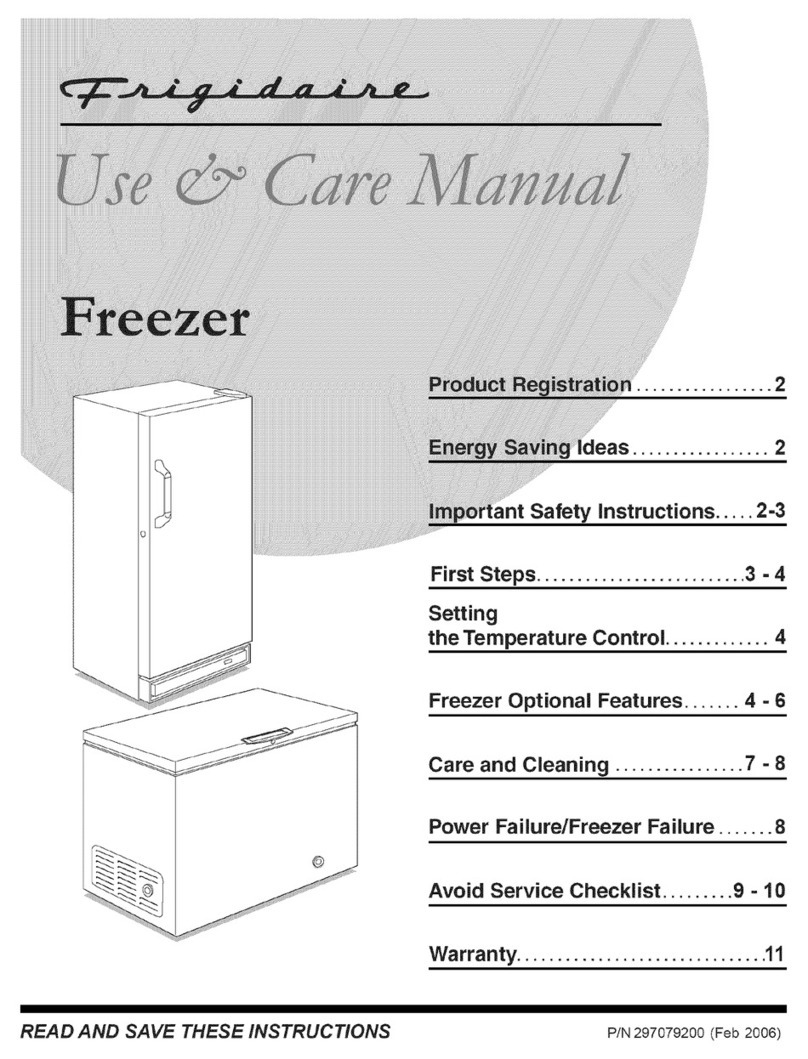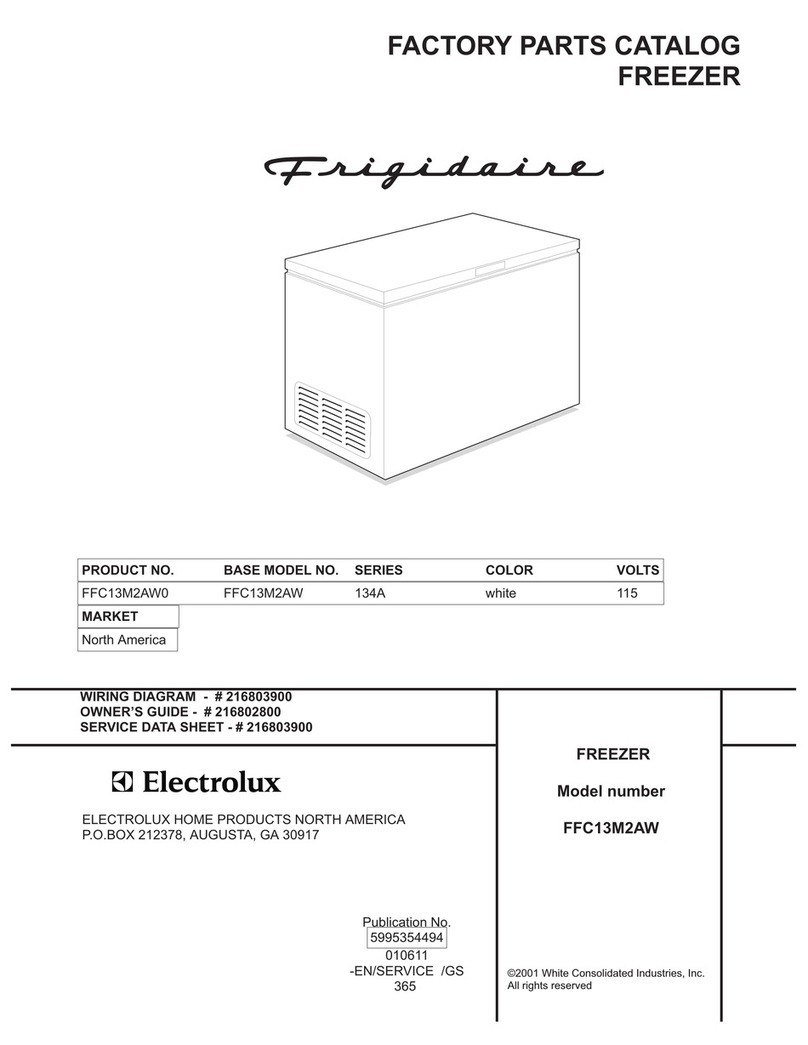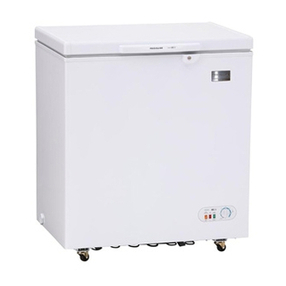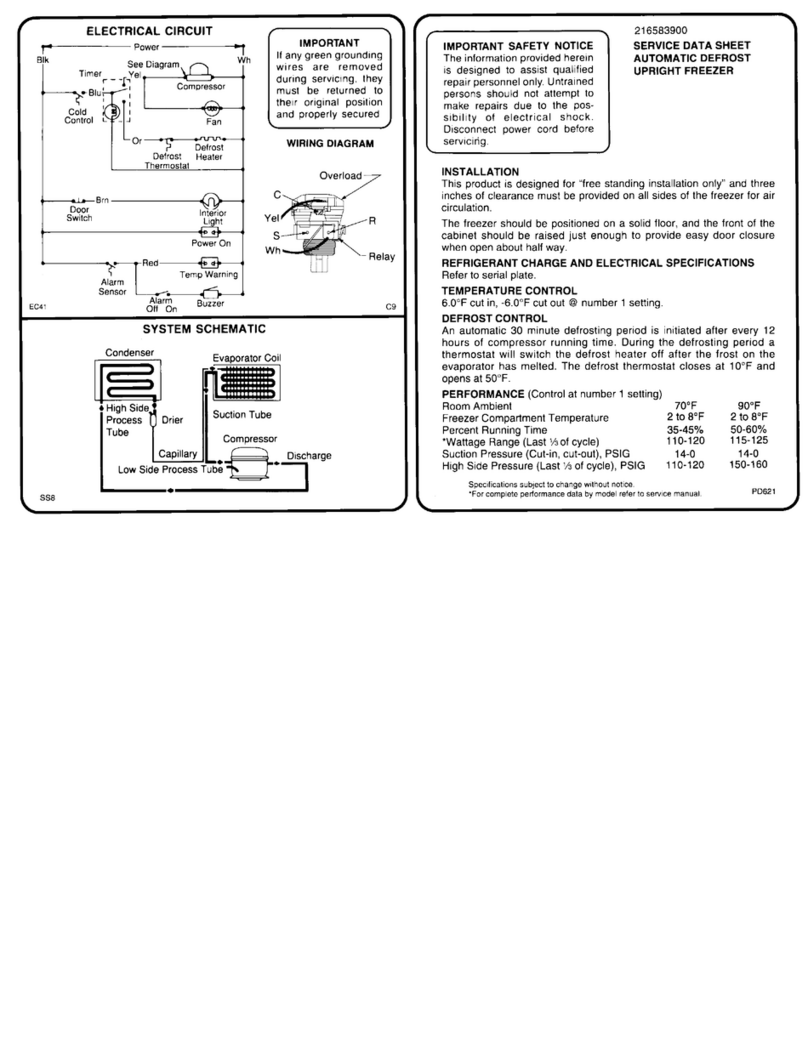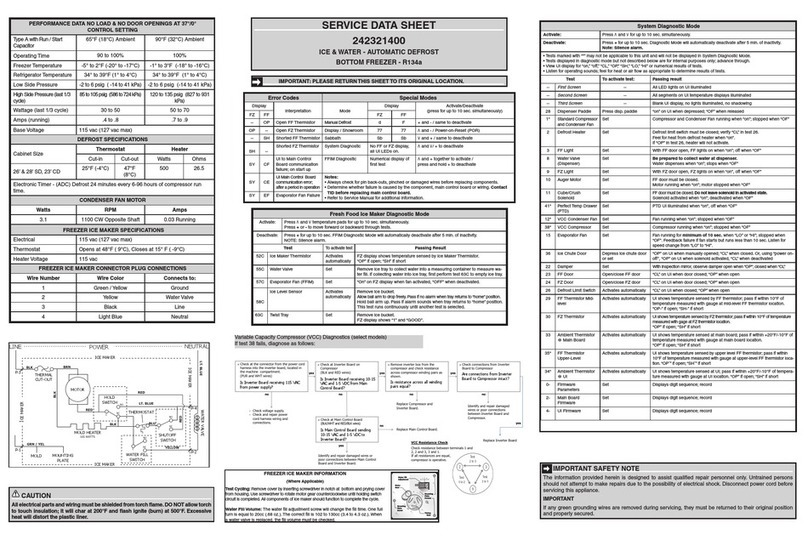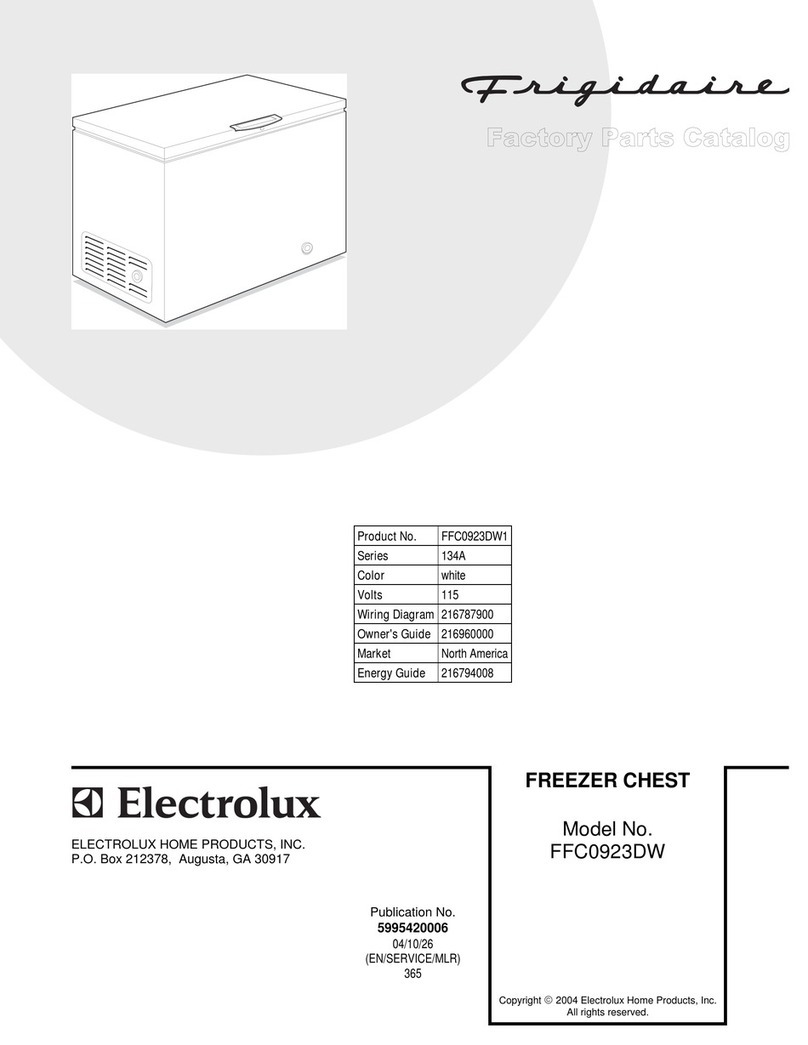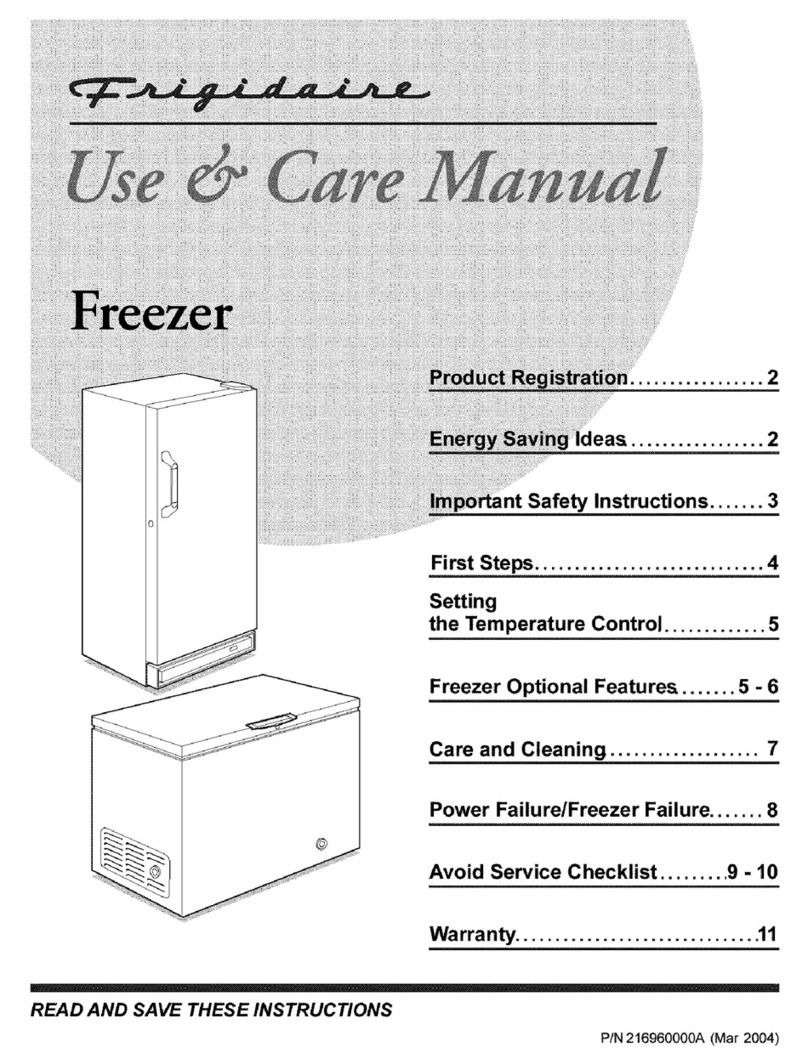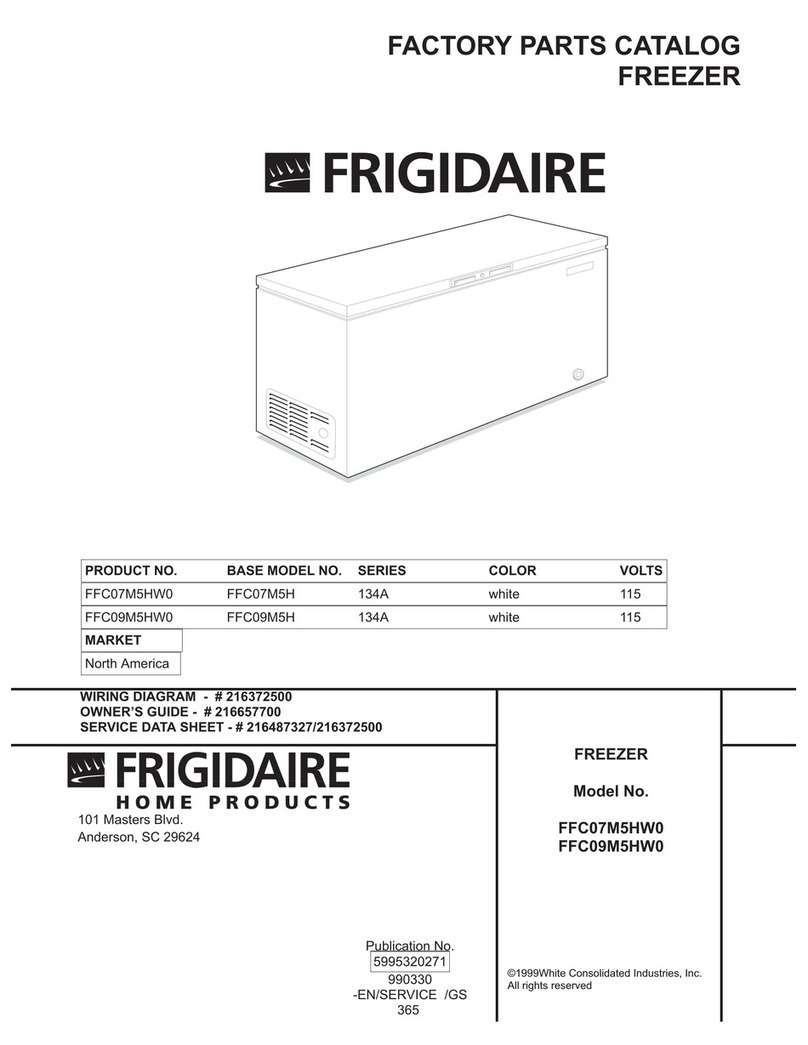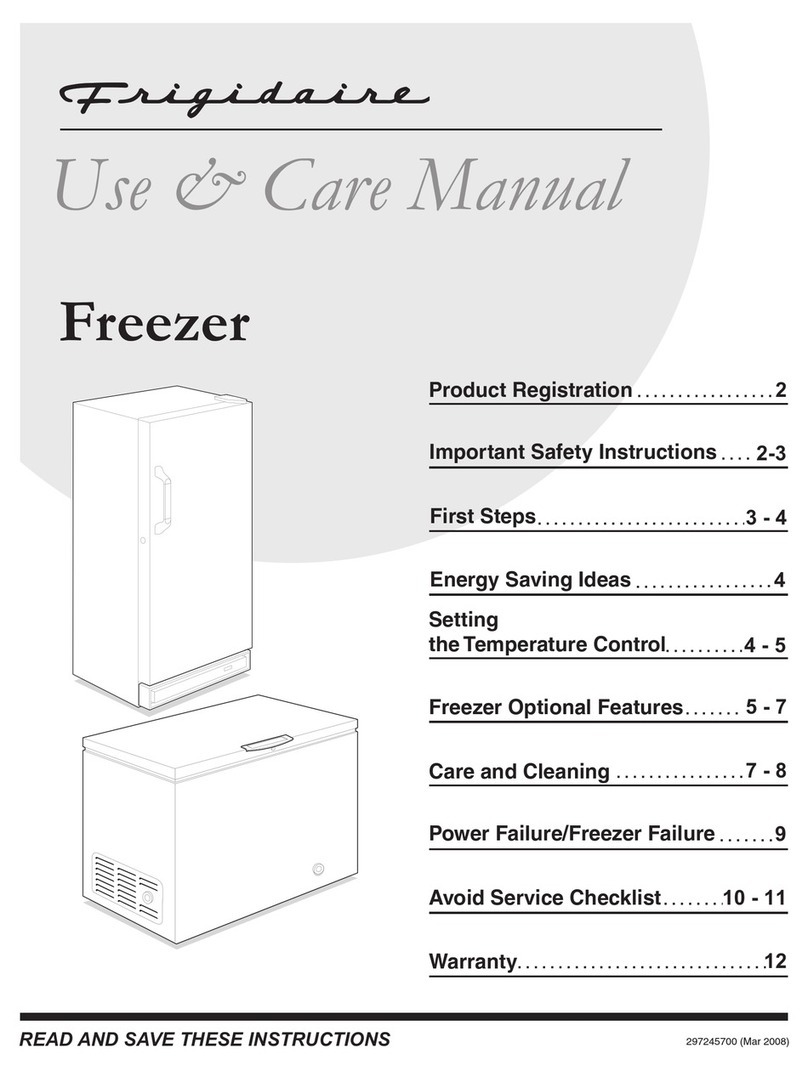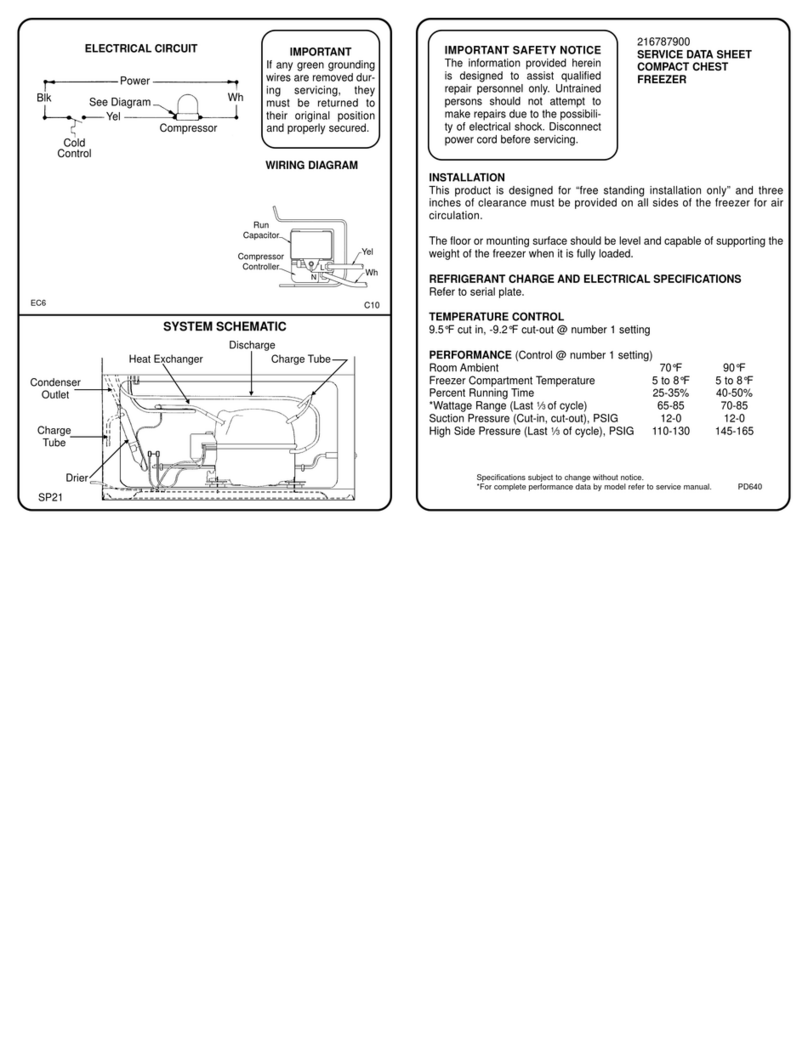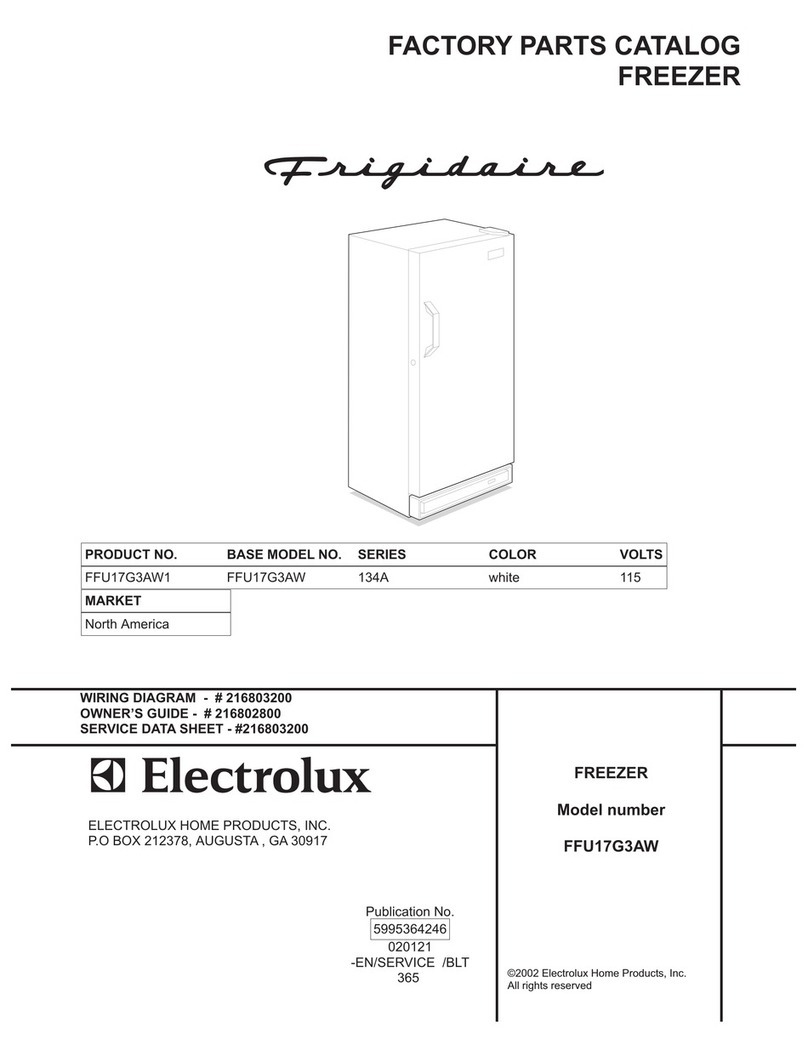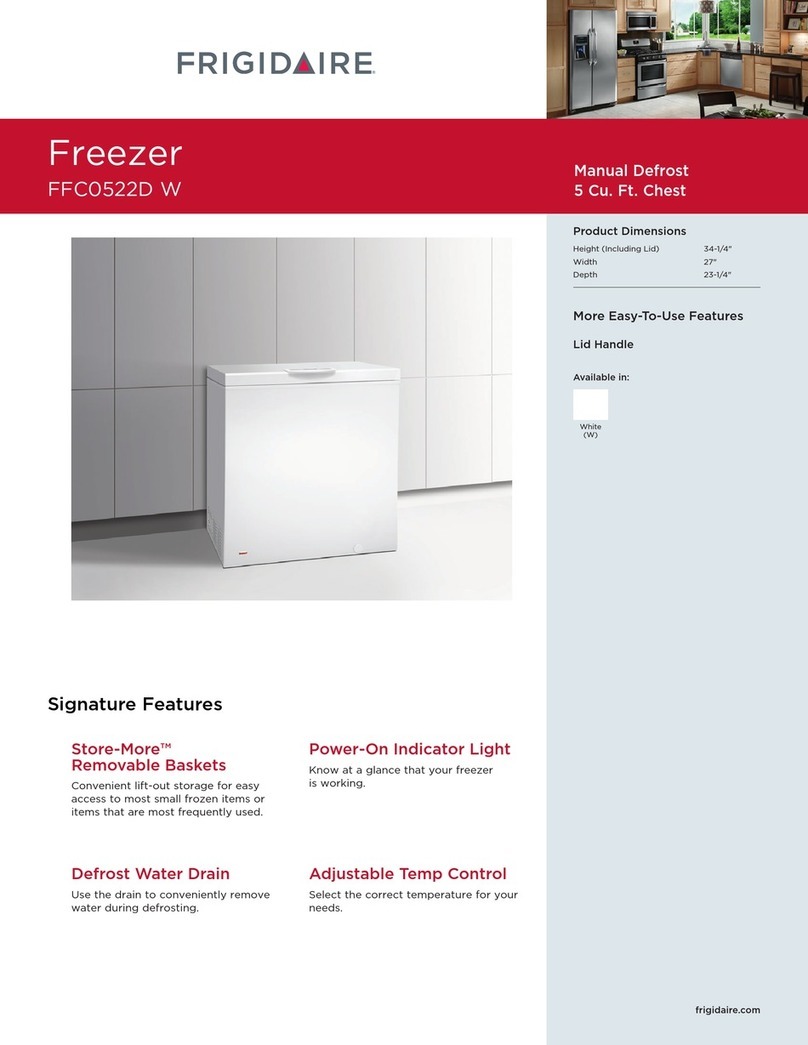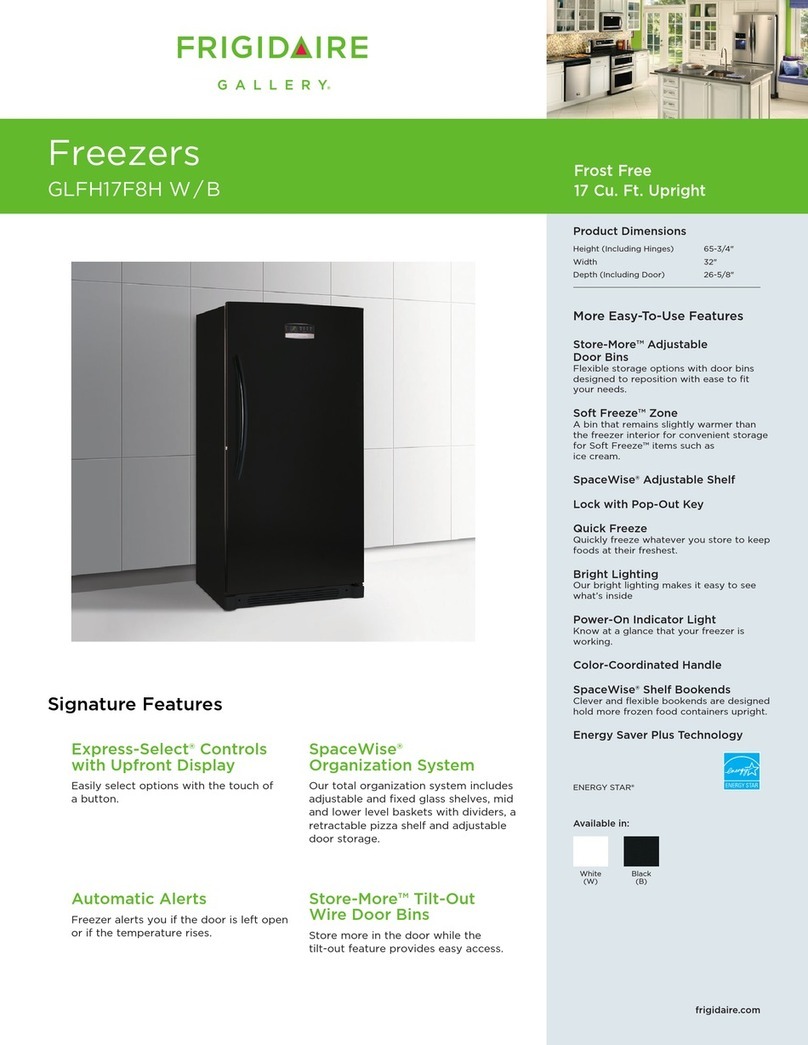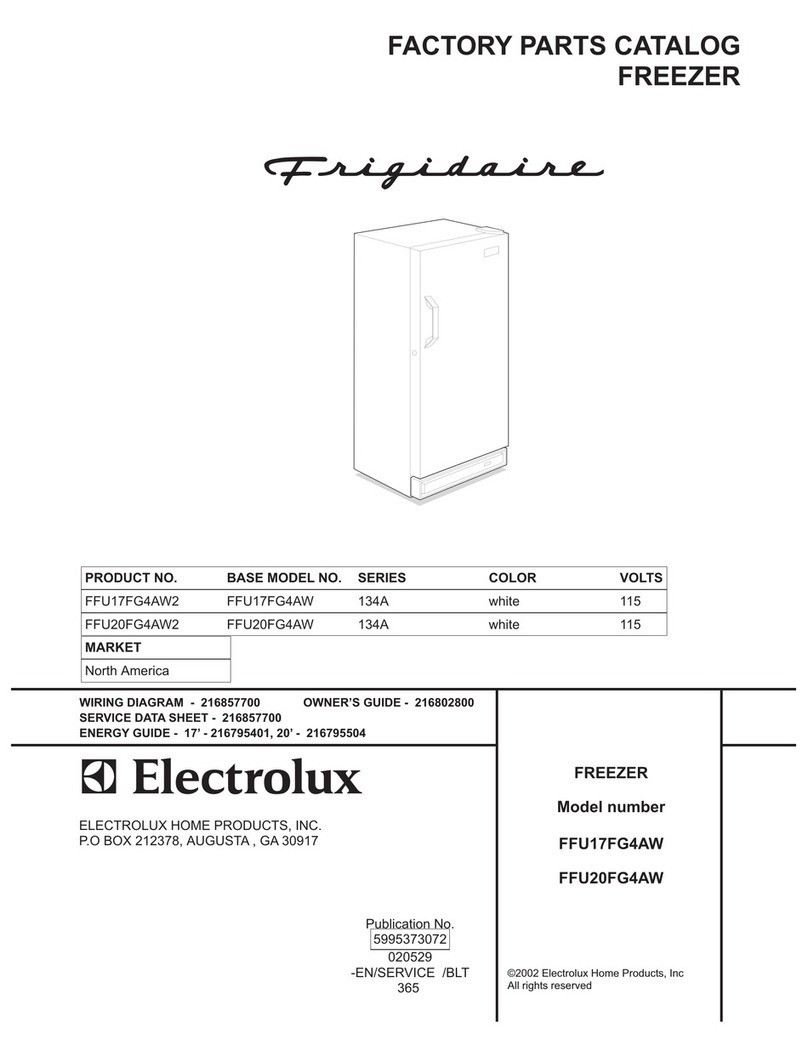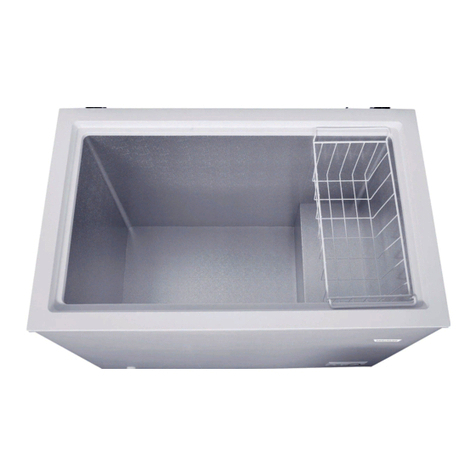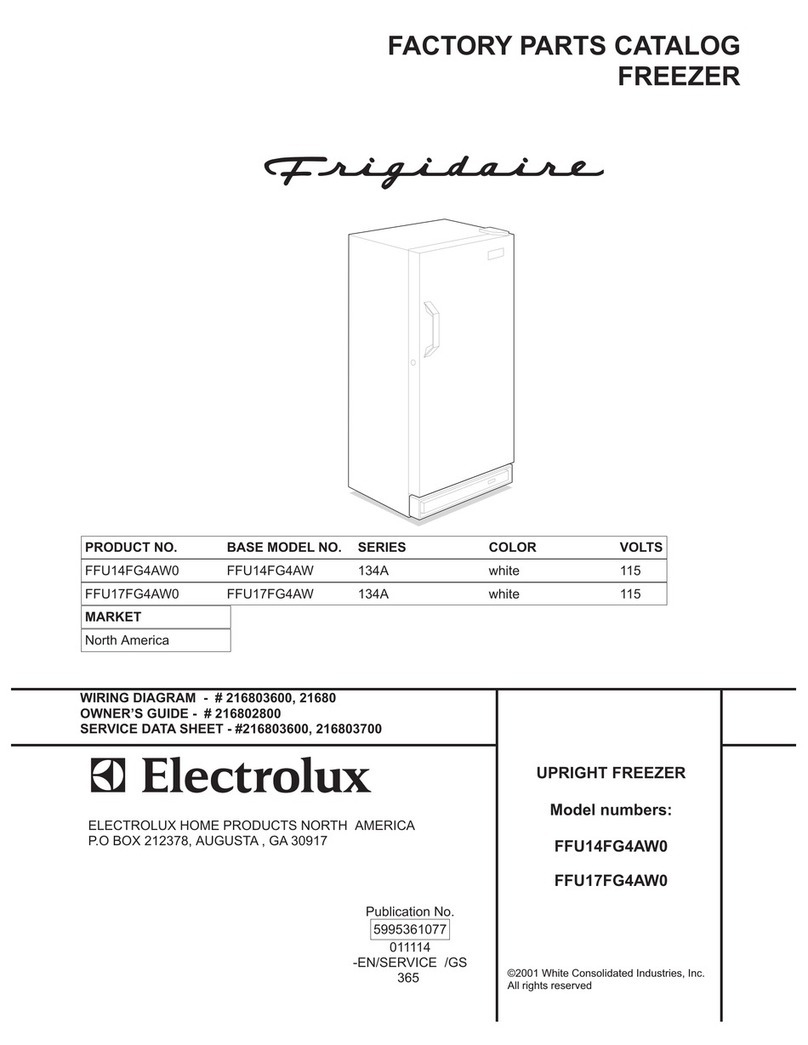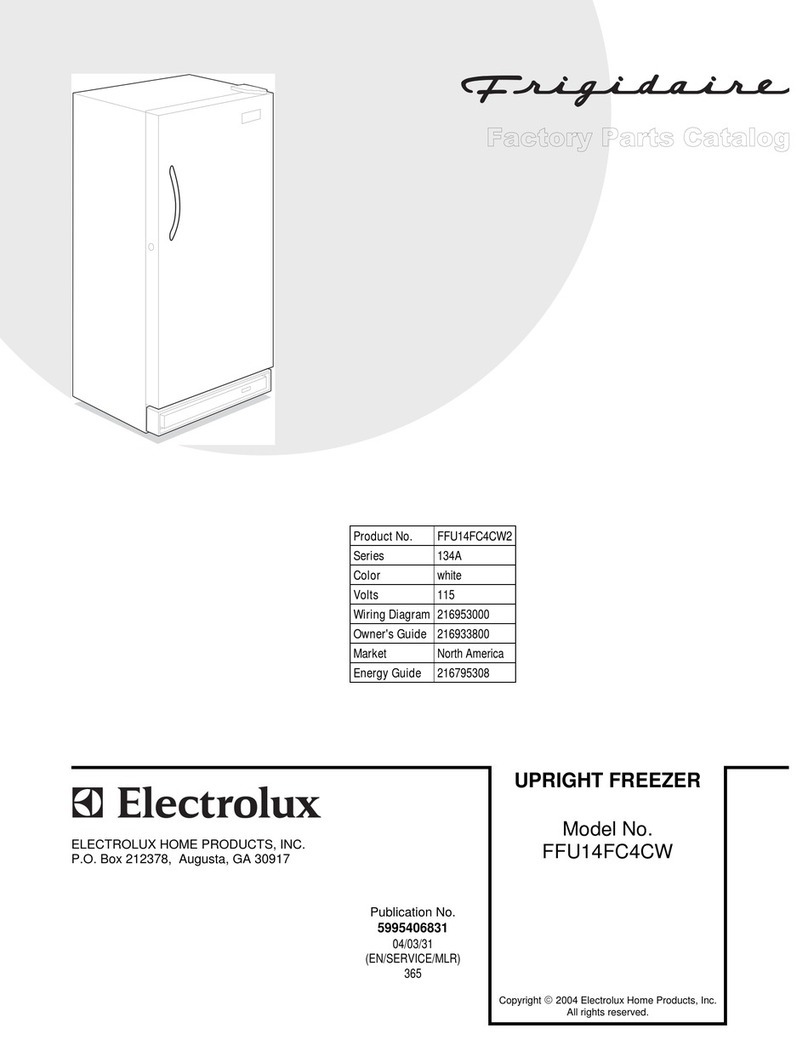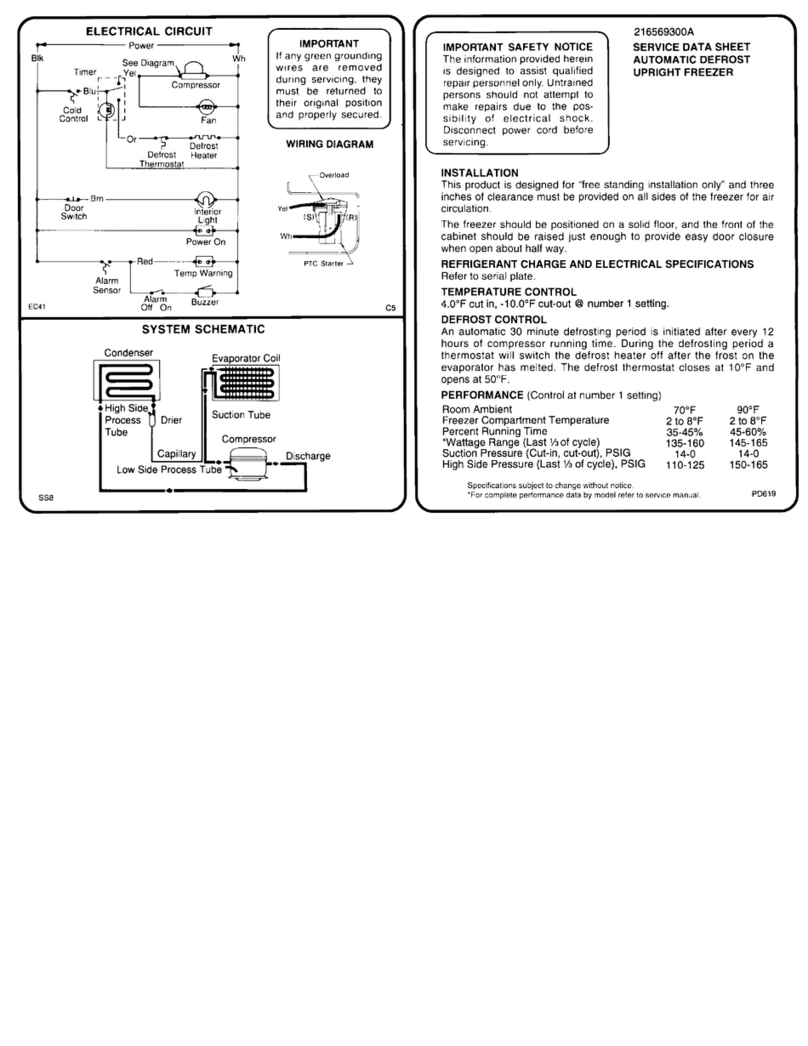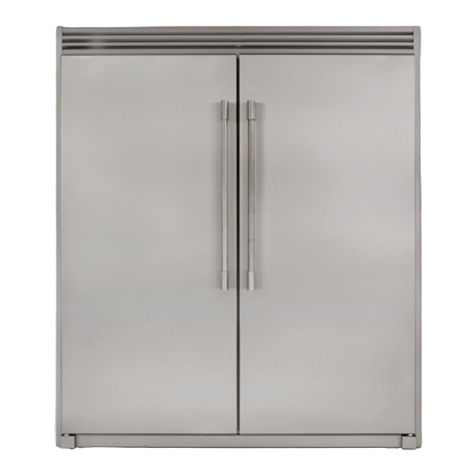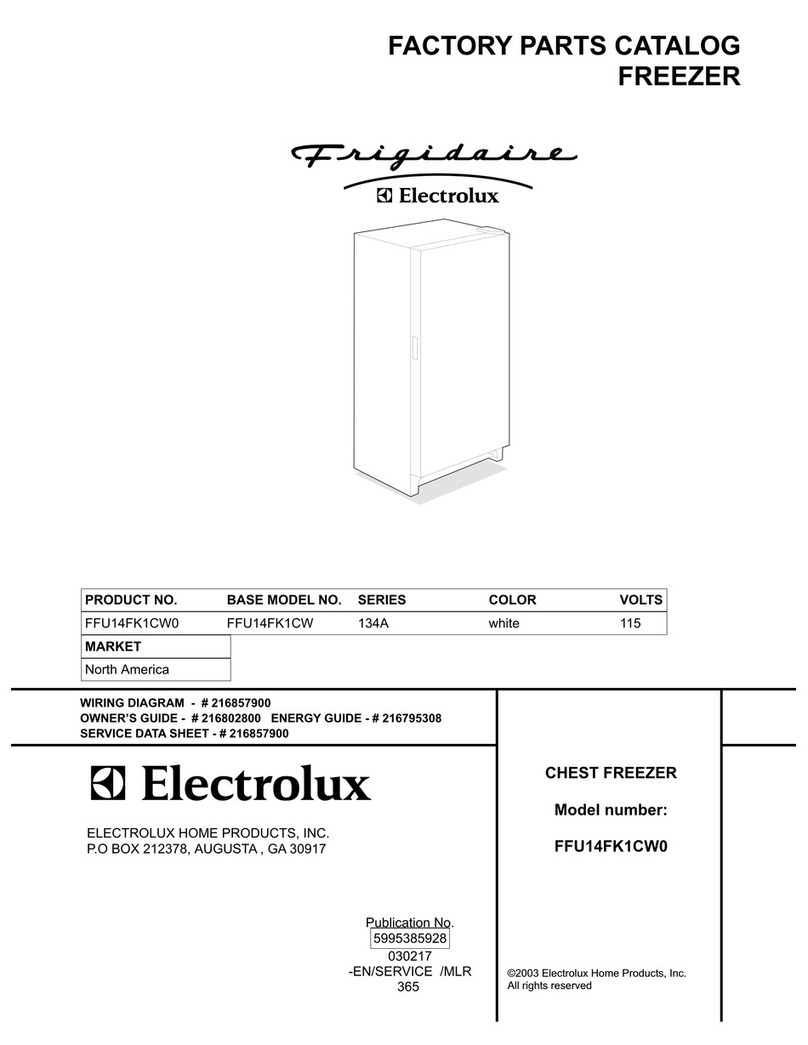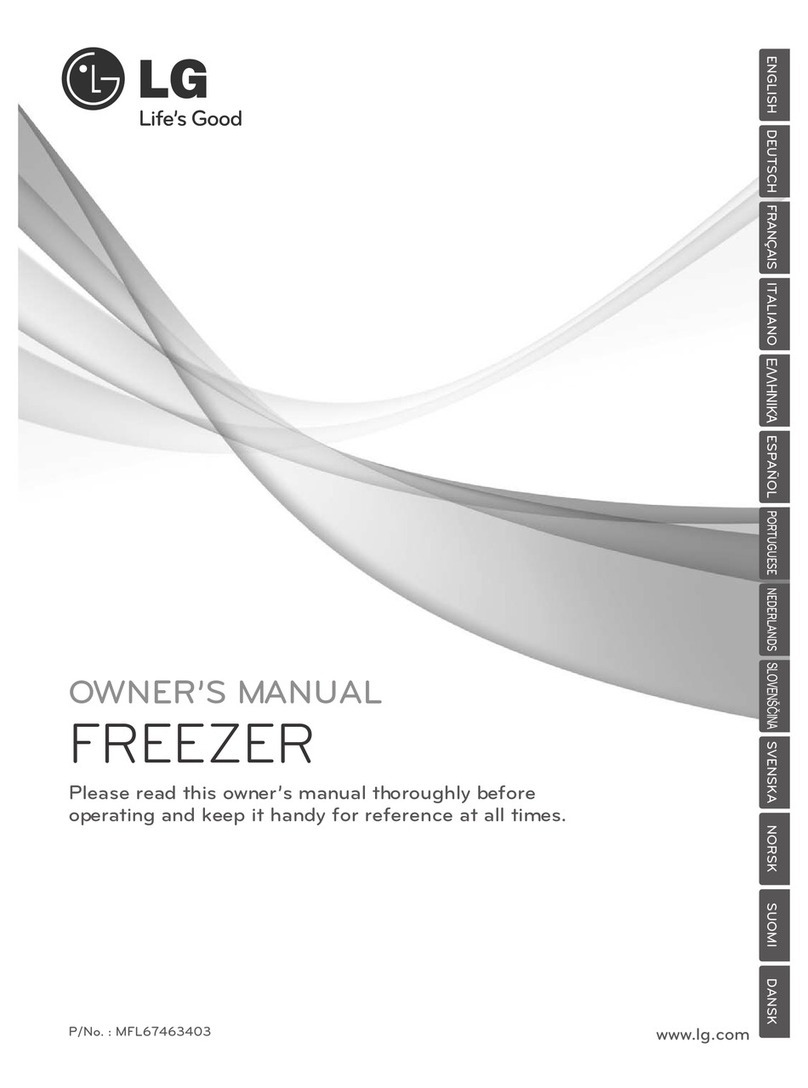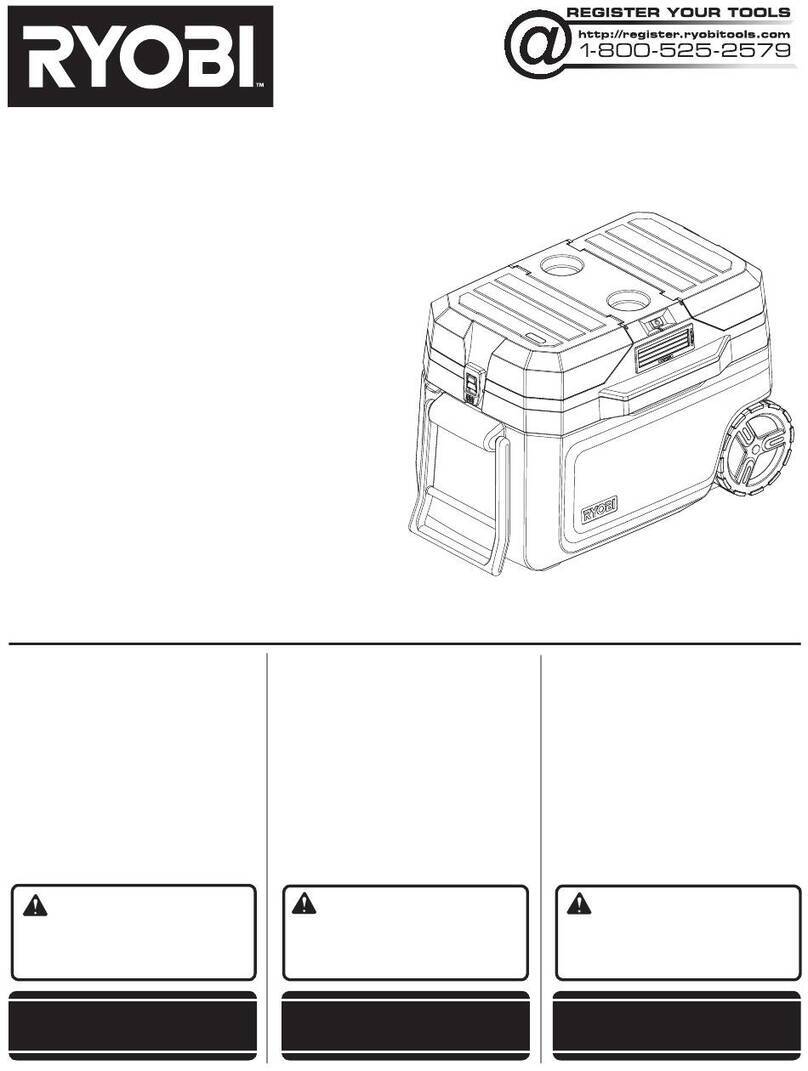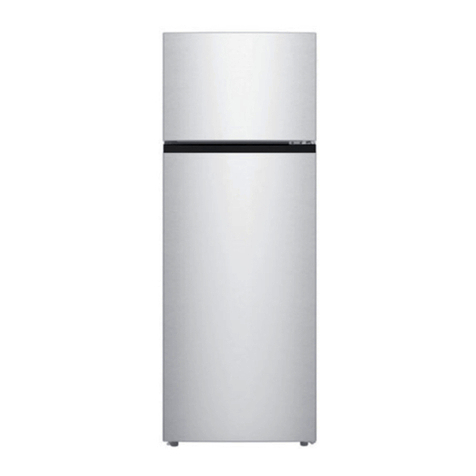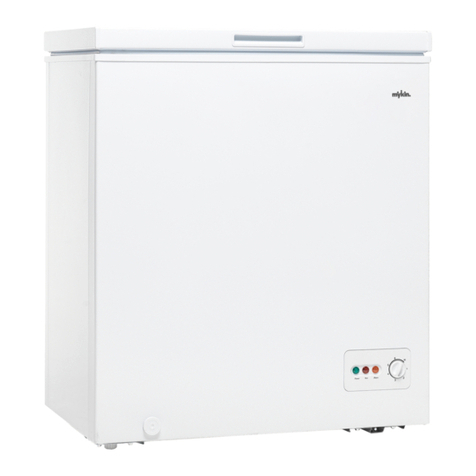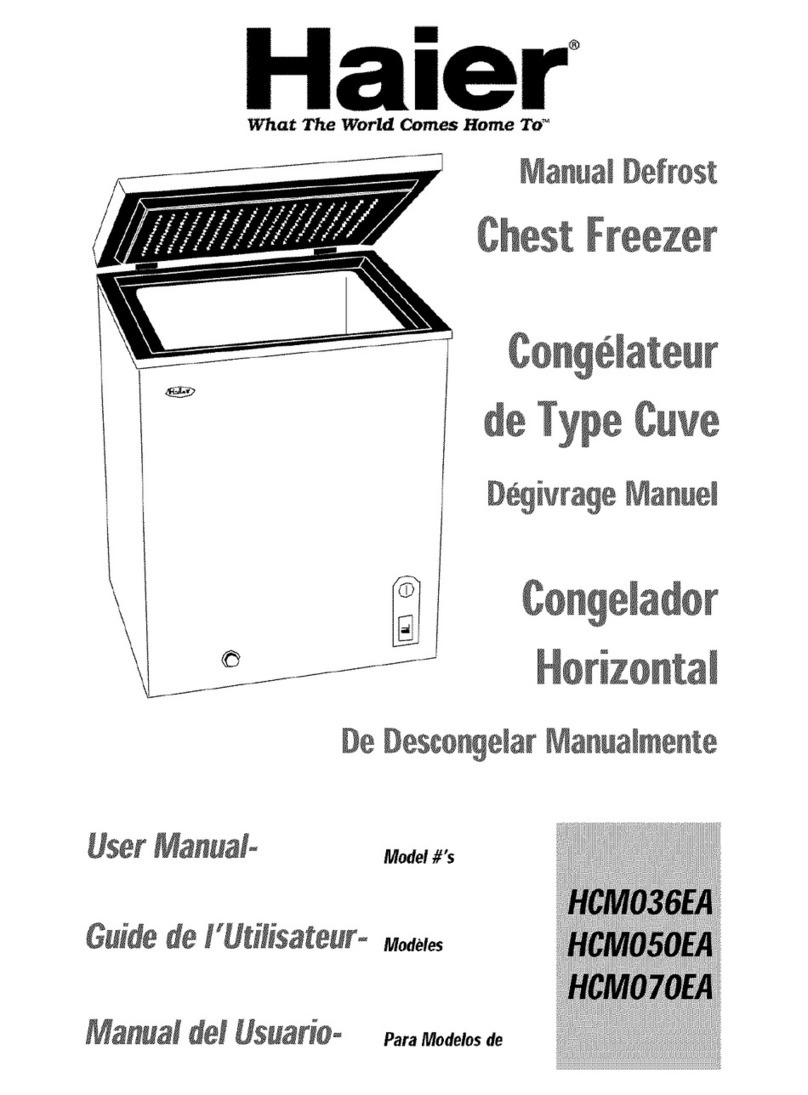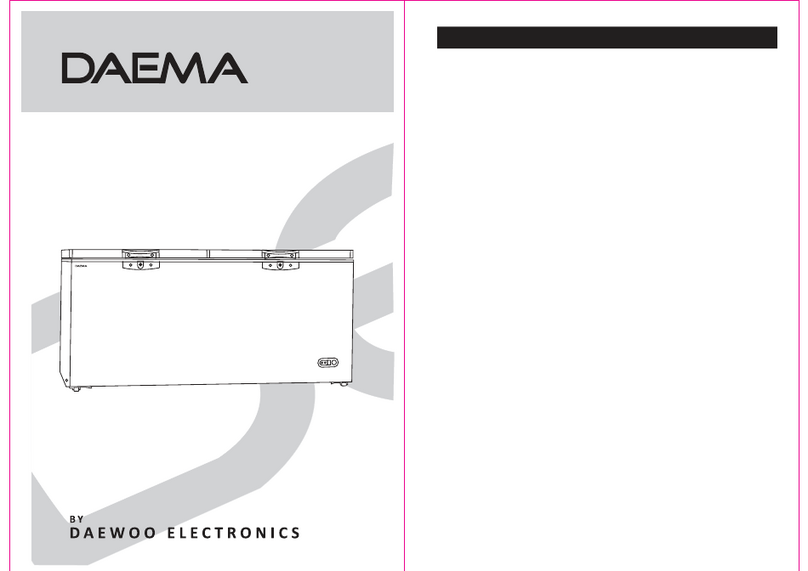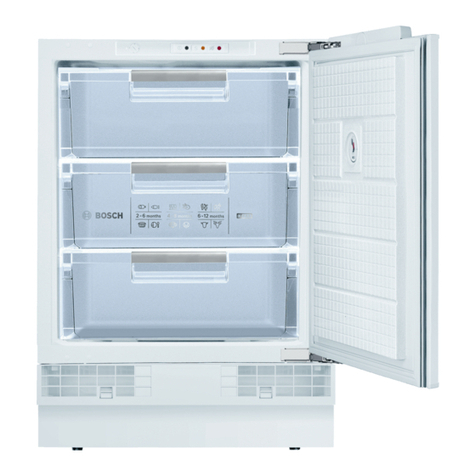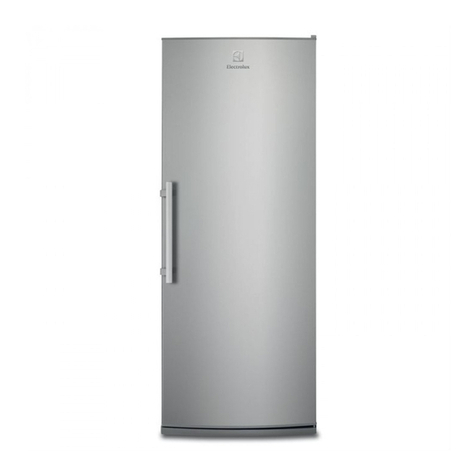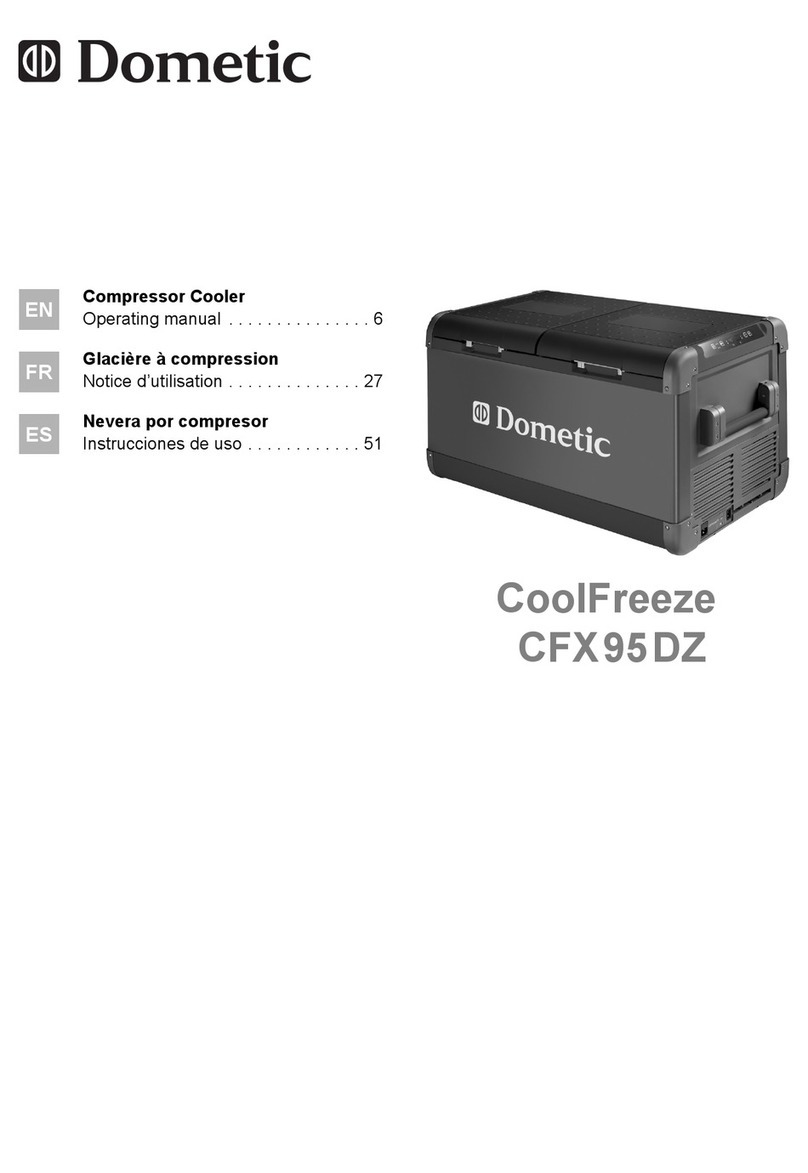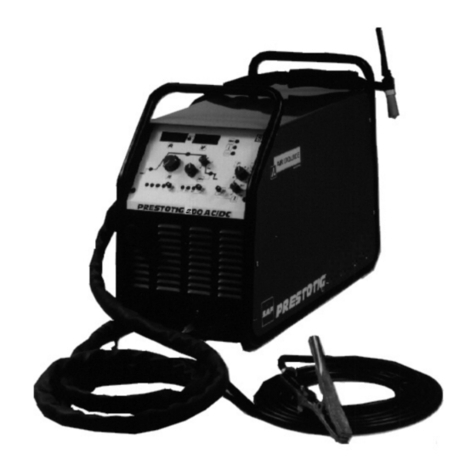8
How to make ice cubes
To make ice cubes fill the enclosed ice cube tray with
water and put it to the frozen food compartment.
Wetting the bottom of the tray and setting thermostatic
control knob to maximum stage can shorten preparing
time. After finishing do not forget to reset the
thermostatic control to the suitable stage.
Ready ice cubes can be taken out of the tray under
running water then twist or hit it.
Some useful information and
advice
After opening and closing the door of freezer
vacuum will rise inside the appliance because of
the low temperature. So wait 2-3 minutes after
closing the door - if you want to open it again - while
inner pressure equalises.
Take care of operating the freezer at a position of
thermostatic control so that the inside temperature
can never go beyond -18 °C, since temperature
higher than this can deteriorate frozen foods.
At the top of the appliance there are two cooling
accumulators placed in the freezing tray. It is
practical to keep these accumulators in the
appliance during use. They are basically for
increasing dangerous warming time of the interior
of the appliance up to 20 hours in case of current
failure or trouble. This time is enough for the stored
foods to stand out the period without quality loss
while current supply recovers or a serviceman
clears the fault.
These two cooling accumulators placed in a
cooling bag are suitable for giving subsidiary
cooling on excursions.
It is practical to make sure of faultless operation of
the appliance daily so as to notice possible failure
in time and prevent deterioration of frozen foods.
Hints and ideas
In this chapter practical hints and ideas are given
about how to use the appliance to reach maximum
energy saving and there is environmental information
about the appliance as well.
How to save energy
Avoid putting the appliance in a sunny place and
near anything that gives off heat.
Be sure that the condenser and the compressor
are well ventilated. Do not cover the sections
where ventilation is.
Wrap products in tightly closing dishes or cling
film to avoid building up unnecessary frost.
Avoid products put in the freezer compartment to
touch foods already frozen.
Do not leave the door open longer than
necessary and avoid unnecessary openings.
Put warm foods into the appliance only when
they are at room temperature.
The condenser must be kept clean.
The appliance and environment
This appliance does not contain gasses which
could damage the ozone layer, in either its
refrigerant circuit or insulation materials. The
appliance shall not be discarded together with the
urban refuse and rubbish. Avoid damaging the
cooling unit, especially at the rear near the heat
exchanger. Information on your local disposal sites
may be obtained from your municipal authorities.
The materials used on this appliance marked with
the sympol are recyclable.
Maintenance
Defrosting
Bleeding part of the moisture of cooling chamber in
form of frost and ice goes with the operation of the
appliance.
Thick frost and ice has an insulating effect, so it
reduces cooling efficiency as the temperature
increases, it needs more energy, at a certain
thickness it does not allow the door of the freezing
compartment to open, possibly the door can be
broken.
